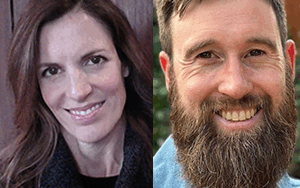Andreas Stefik talks with SE Radio’s Felienne about how blind and visually impaired people use the computer, most commonly with a screen reader. They discuss how screen readers work and what programmers can do to make software more accessible for this group of users. The episode starts with the basics, like adding alt tags, giving links meaningful names, not storing information in images, and validating websites with accessibility checkers. The conversation builds up to frameworks and libraries that can be used to create more accessible interfaces, as well as different accessibility architectures for different programming languages, and how to cater for broad diversity in visual impairments. They also examine programming while blind and how to create accessible APIs, programming tools, and programming languages.
Show Notes
Related Links
- W3C accessibily guidelines
- The Quorum Programming Language
- NVDA free screen reader
- VoiceOver info for macOS
- VoiceOver info for iOS
- WebAccessibility Checker
- Java Accessibility API
- Microsoft accessibility information
- IAccessible2
- nsaccessibility kit for macOS
- Aria accessibility standards
- Andreas’s website






[…] you want to learn more about this, I recorded an SE Radio episode on programming for when you are visually impaired with Andreas Stepik who is designing am accessible programming language called […]
This was the most interesting episode I have heard in a long time. In my career I haven’t thought about this much. Thank you for bringing it to my attention.
Out of curiosity, and as old user of the venerable Pascal programming language, and having a mathematical background: Were there experiments with „:=” als assignment operator and „=” for equality? What was the result?
Keep up the good work,
Tim